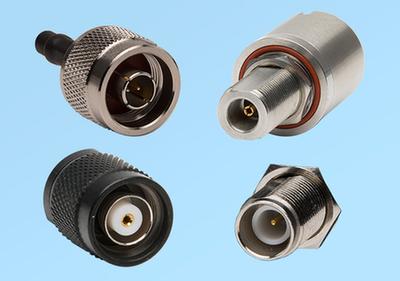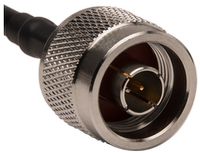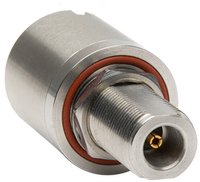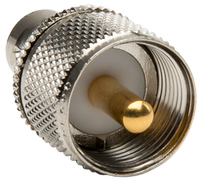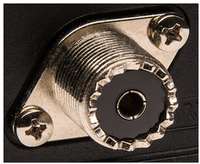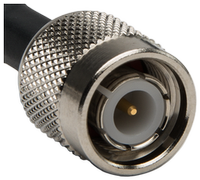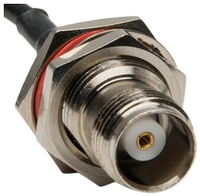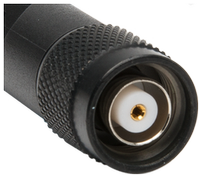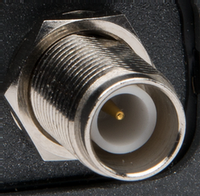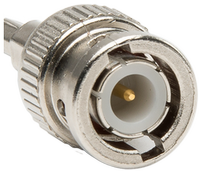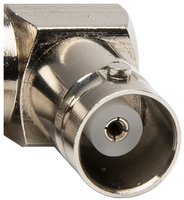How to identify Coaxial Connector Types
Posted by Michael Crudele on
Over the years, we've had many customers come to us looking to clarify RF connector types when they are specifying and purchasing RF coaxial cable assemblies. There are many different types of connectors out there, including Type-N, UHF (aka PL-259 / SO-239) TNC, RPTNC, BNC, SMA & RPSMA.
Most people can tell the difference between the "standard" connector types, but many people, ourselves included, find it difficult to identify the gender of reverse polarity connectors? Here we will do our best to help you identify the difference between male and female connectors in terms of their polarity—standard or reverse (RP).
Standard Polarity Coaxial Connectors.
When trying to identify male and female connectors keep in mind the following:
- When mating a plug and a jack, it is important to ensure that both connectors have the same polarity. For example, the plug and jack should both be standard polarity, or both must be reverse polarity.
- Typically, standard RF plugs are male, and the threads are on the inside of the shell.
- Typically, standard RF jacks are female, and the threads are on the outside of the shell.
- The shell of a plug (male) typically covers the shell of a jack (female).
Examples - standard polarity
- A standard polarity female jack has a socket in the middle designed to receive the pin from the male plug, and the jack’s shell has threads on the outside. Here we have shown an SMA jack, typically found on devices such as a 3G/4G/LTE cellular gateway or a GPS receiver.
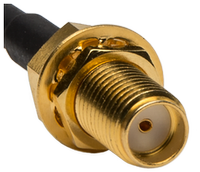
- A standard polarity male plug has a center pin that sticks out from the middle, and the plug’s shell has threads on the inside. Here we have shown an SMA plug, typically found on the end of a coaxial cable that connects to products such as a 3G/4G/LTE cellular gateway or a GPS receiver.
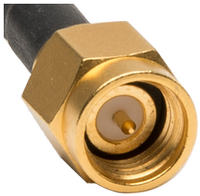
Examples - REVERSE polarity
- A "reverse polarity" female jack has a center pin that sticks out from the middle, and the jack’s shell has threads on the outside. Shown here is a RPSMA-Female jack, typically found on such products as a 900 MHz ISM modem, 2.4/5 GHz 802.11 WiFI / WLAN radios or access points.
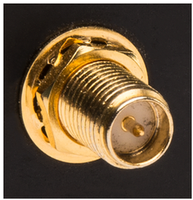
- A "reverse polarity" male plug has a socket in the middle designed to receive the pin from the female connector, and the plug’s shell has threads on the inside. Here we have shown an RPSMA-Male plug, typically found on the end of a coaxial cable that connects to products such as a 900 MHz ISM modem, 2.4/5 GHz 802.11 WiFI / WLAN radios or access points.
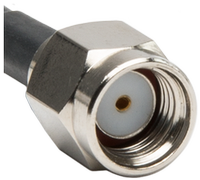
Remember:
- A standard polarity jack (female) has a socket, whereas a reverse polarity jack (female) has a pin.
- A standard polarity plug (male) has a pin, whereas a reverse polarity plug (male) has a socket.
Connector Types and Genders
The following table identifies for you the various types of connectors commonly used, and their genders:
| Connector Type | Male (Plug) | Female (Jack) |
|
Standard Type N
|
(Std. N-Male) pin with threads inside |
(Std. N-Female) socket with threads outside |
|
UHF (PL259) |
(UHF Male: PL-259) pin with threads inside |
(UHF Female: SO-239) socket with threads outside |
|
Standard TNC |
(Std. TNC-Male) pin with threads inside |
(Std. TNC-Female) socket with threads outside |
|
Reverse Polarity TNC (RPTNC) |
(RPTNC-Male) socket with threads inside |
(RPTNC-Female) pin with threads outside |
|
BNC |
(BNC-Male) pin with threads inside |
(BNC-Female) socket with threads outside |
|
Standard SMA |
(SMA-Male) pin with threads inside |
(SMA-Female) socket with threads outside |
|
Reverse Polarity SMA (RPSMA) |
(RPSMA-Male) socket with threads inside |
(RPSMA-Female) pin with threads outside |
| Mini UHF |
(Mini UHF Male) pin with threads inside |
(Mini UHF Female) socket with threads outside |
I hope the descriptions and images have helped you understand the differences between the connector type, polarity, and gender.
Keep in mind that there are also "Reverse-Thread" and "Reverse-Polarity / Reverse-Thread" Connectors, but that's a discussion for another day!!!

